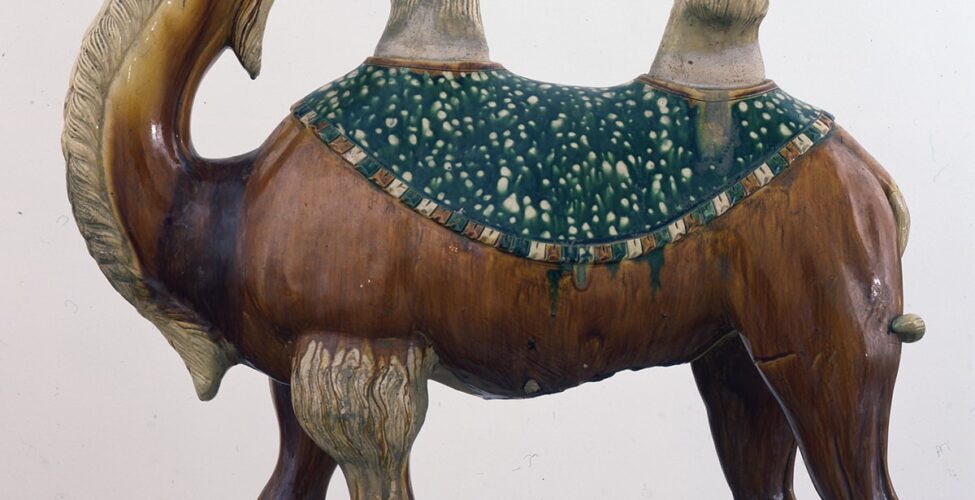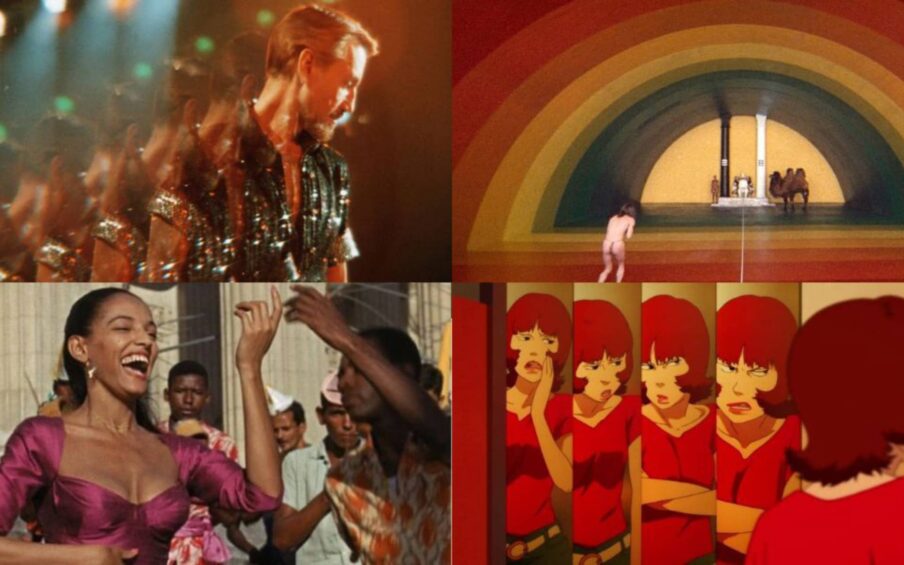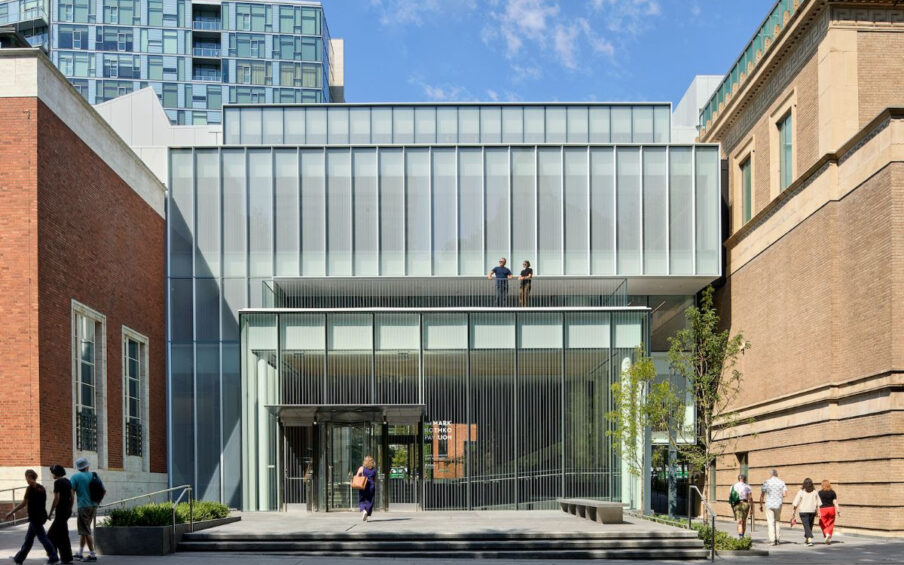“This expressive camel, with its head thrown back, makes a bellowing cry that seems relevant to these times. Bactrian camels were often part of a larger set of funerary sculptures in Tang dynasty China. As symbols of prosperity manifested through the Silk Road trade routes, camels would have been placed with other ceramic figurines in the tomb of a high-ranking or wealthy person to signify their status and the comforts of luxury goods. The tricolor glazes, pose, and general form of this Bactrian camel are all typical. But this example is especially striking for its powerfully arched neck and expressively sculpted head. Jaws stretched wide, the camel’s upper lip even curls back from its teeth as it brays in discontent. I like to imagine the sound it makes—shrill, honking, ear-piercing? Whatever the sound, the personality and realism infused in this sculpture is a good reminder—we all have our moments of discontent, in these days of radical patience.”
—Jeannie Kenmotsu, Japan Foundation Associate Curator of Japanese Art and Interim Head of Asian Art
China, Shaanxi province. Bactrian Camel, 675/750. Molded earthenware with sancai (three-color) glaze. Museum Purchase: Funds provided by Miss Julia Blodgett, Mrs. Sara R. Blodgett, Miss Sarah W. Blodgett, Dr. and Mrs. William Corbin, Mr. and Mrs. Paul Feldenheimer, Mr. Eric Hoffman, Mrs. Joan Irwin Hoffman, Mrs. Lesley S. Miller, Mr. Aubrey Watzek, and Mrs. Donald F. Winter, 65.30, public domain



